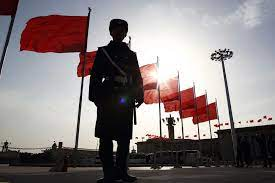A series of murky incidents from the Baltic Sea to the Red Sea, related to the ongoing conflicts between Russia and Ukraine on the one hand and Israel and Hamas on the other, seem to have resulted in apprehensions of these being repeated between China and Taiwan in the Indo-Pacific.These incidents, which have occurred or are likely to occur, expose the vulnerability of the security of undersea /submarine cables, which carry most of the world’s internet traffic in a data-driven world.
These cables are said to be the arteries that connect nation-states and their people in literally every human activity, including trade, commerce, entertainment, and social interactions.
A recent US Congressional Research Service (CRS) report revealed that commercial undersea telecommunication cables carry about 99% of transoceanic digital communications, including international voice, data, internet communications, and financial transactions.
In fact, global communications via satellites are minuscule compared to transoceanic ones. Individual private companies and consortia of companies own and operate a network of over 500 commercial undersea telecommunication cables that form the backbone of the global internet.
Any interference in their flow can disrupt lives and livelihoods and compromise the capacity of nation-states to trade, communicate, and fight wars, it is feared.
These cables, typically between two and seven inches thick and having a lifespan of approximately 25 years, are laid by slow-moving ships. Wrapped in steel armor, insulation, and a plastic coat, they contain fiber threads capable of transmitting data at 180,000 miles per second.
This has forced companies to consider alternative routes to avoid China’s interference. The Singapore-Japan Cable 2 (SJC2) project is one of the projects that has been delayed due to China’s actions. Due to Chinese assertiveness, two planned new cables from Singapore to America—Apricot and Echo—have been rerouted via Indonesia to avoid the South China Sea.
It may be noted that Chinese behavior led the Quad leadership in 2023 to adopt a resolution to support the regional “Quad Partnership for Cable Connectivity and Resilience,” which aimed to strengthen cable systems in the Indo-Pacific region by drawing on world-class expertise in manufacturing, delivering, and maintaining cable infrastructure.
Additionally, the U.S. “CABLES” program and the “Trilateral Partnership for Infrastructure Investment” between the U.S., Australia, and Japan are also expected to provide assistance in setting up safe and reliable cable infrastructure across the Indo-Pacific region.
In any case, submarine cables pose a significant governance challenge due to the absence of an international regulatory authority or framework to oversee them. Some experts favor the idea of establishing “cable protection zones,” which would ban certain types of anchoring and fishing and require greater disclosure by vessels inside them. Some also talk of solutions that include updating international law around cables and establishing treaties that would criminalize foreign interference.
However, all these options need global consensus. But that is a Herculean task as the U.S. and its allies, Russia and China, and important emerging powers like India have to be on the same page, something highly unlikely.





